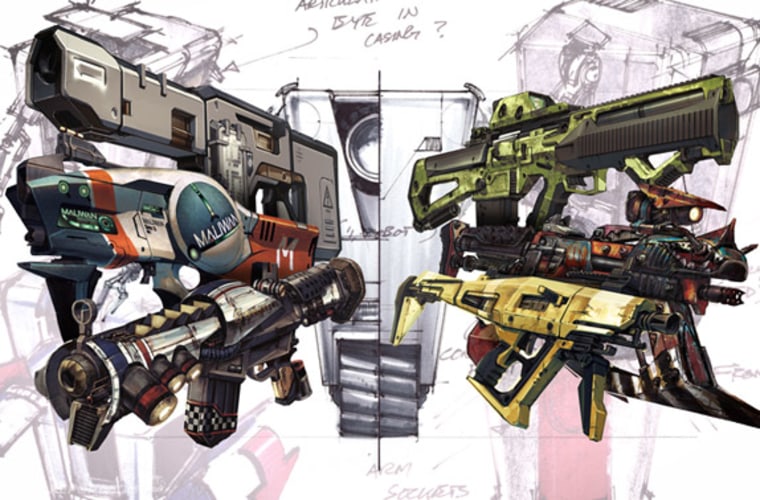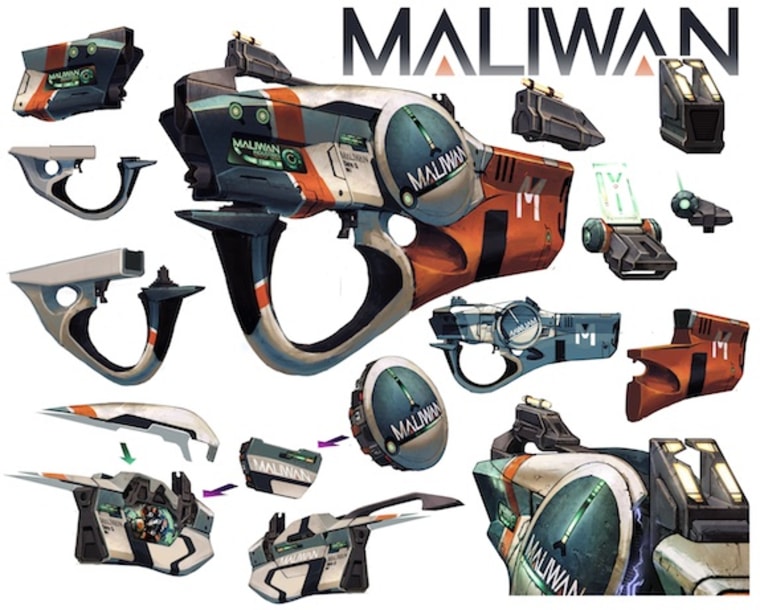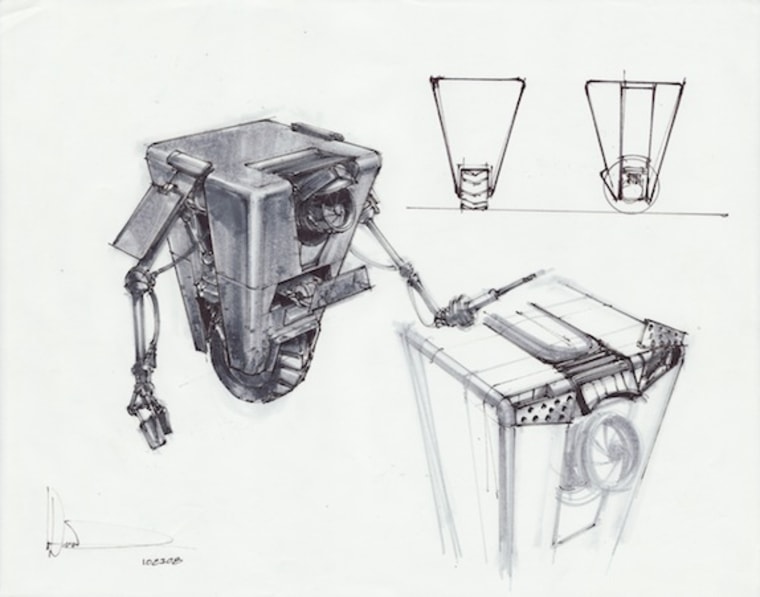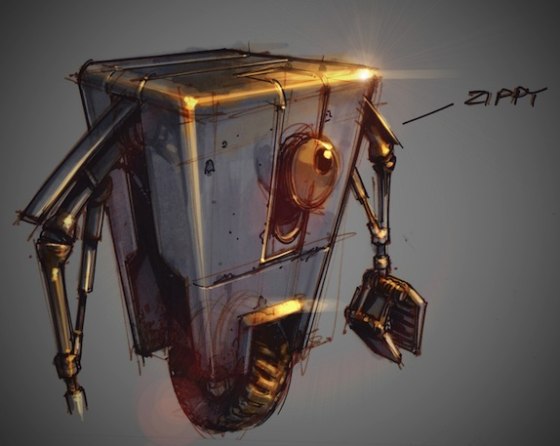
“You have to be able to draw. That’s the most important thing. Your resume doesn’t mean much if your portfolio isn’t up to it,” Kevin Duke, concept artist at Gearbox, told me during PAX. “We’re not looking for a specific kind of training, if you can draw and you have good ideas, we don’t care if you didn’t attend some kind of specialized school.”
It’s always fascinating to talk to people who are involved in the trenches of game design and development, and being a concept artist is more complicated than just sitting down to draw. You have to understand how everything works. “You have to be an engineer, you have to be an architect, a fashion designer… There are just a lot of skills wrapped up in entertainment design,” Duke explained. He also shared the secret to creating the guns of Borderlands 2: You have to look at everything except other guns.
“The real early meetings are game design. The designers have to figure out what they’re even going to ask art for. When we finally get to the point where we have decisions on what needs to be concepted is when we come in,” Duke said. “With Borderlands 2 you’re working with a sequel, so there are known quantities already. You have a style in there already, and a look for these weapons. Having said that, we wanted to switch it up, and really define what different manufacturers look like.”
One of the challenges of Borderlands 2 was giving each weapon more character and definition. Gearbox wanted you to be able to tell the manufacturer and type of weapon based on limited visual information; different weapons manufacturers should look different when they fall to ground.
That sort of differentiation between guns couldn’t happen by using existing gun designs. “As far as reference goes, you look at real guns, but beyond that you find influence, material influence and shape influence, from all over the place,” Duke said. “Torgue in particular, I looked at a bunch of World War 2 airplanes, I looked at B-51s, I looked at the 1950s jet fighters, like F-86 Sabres, they had some real cool shapes. That’s where the big cowling designs came from, the paint schemes are all from American jet fighters.” You’ll see chrome, and checkboards, and bold stripes; all designs pulled from aircraft of that period.
Torgue weapons took inspiration from World War 2 aircraft

Duke didn’t just pull inspiration from aircraft. “We looked at engine blocks and motorcycles. For Maliwan we looked at personal electronics, iPod and Apple design, I looked at Austrian car manufacturers and motorcycle manufacturers… You don’t want to get myopic and just look at real guns. You need to find influence from anything, all over the world. Almost anything in the world has shapes you can pull from and colors and materials that will influence your designs.”
I was curious about how many Gearbox artists worked digitally versus creating physical sketches. “I pretty much work all digital. I work with a Cintiq, a big Wacom screen so you can draw directly on the screen,” Duke said. It comes down to personal preference, and the important thing is that people can sketch. Gearbox has artists that work in traditional media, including pen and markers. “It’s all the same skill set, it’s just a matter of what tool you want to use.”

The designs also evolve as they’re turned into objects for the game. “We’re working in a 2D space, we’re trying to fake 3D on a 2D plane. We know what shapes look like, we know how these things lock together. But when you start building in 3D, the actual sculptors have to go in and make this stuff work,” Duke said. “They’ll influence the design themselves. I’m not drawing out every single surface detail and that has to be it. There are some companies that do that, but at Gearbox we trust each other. I really trust the 3D guys to make choices. We have guys that will go in, and you’ll look at what they’ve built from your drawing, and it’s phenomenally better.”

During production, Duke worked with 3D artist David May, who helped him deal with the complexity of the procedurally generated guns. They had to work out how each optional scope, clip, or barrel would connect with the gun, to make sure detail or animation wouldn’t break existing designs. “We tried to make reloads really unique. We have some pretty complicated reloads. Hyperion is all electro-mechanical stuff, so there are all sorts of servos inside the gun that move the scope out of the way and eject the magazine,” he explained. “We have all these ideas, but then you’ll have these surprises where the scope moving forward will clip into this awesome barrel we made. The one barrel out of the six we made isn’t working. So you have to go in and tweak the geometry. It’s just constant.”

Now that Borderlands 2 is finished and will be out next week, what happens to the concept artists? “There’s DLC stuff that we have to concept for, because once [Borderlands 2] is in [certification] there’s basically no art content going in. At that point you need to start concepting for the DLC.” The concept artists may also help create things like billboards and other 2D art. “It’s surprising how involved we can be through the whole project.”
After that, it’s just a matter of getting to work on Gearbox’s next project. I asked him if he could spell the name of the next game so I had it right in my notes. The PR guy in the room looked up as Duke started laughing. Hey, I have to try, right?
We’re playing through Borderlands 2 right now, and we’ll have some thoughts up soon. Until then, take a look at some more great concept art from the game.
More from our friends at "The Penny Arcade Report"
